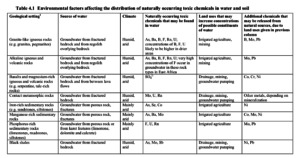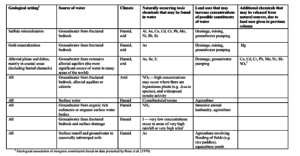Pure water is colorless, odorless and tasteless, but pure water is rarely found in nature. In fact pure water is difficult enough to find anyway (depending on your definition of purity that is). Contaminants — that is, impurities — are very common in water. Some of them are unhealthy while some of them, like minerals, are actually good for us. This is why we don’t drink distilled water!
Impurities found in water come from various sources. Some may be a result of our daily activities, some may come from industries and factories and yet others may be caused by cattle, livestock and other organisms (including microorganisms). Live contaminants like bacteria, protozoa and viruses make not only make water unfit for consumption, they also cause many fatal diseases and disorders. They are difficult to remove and can even withstand boiling.
Common Water Impurities
Suspended Particles: Contaminants like sand and mud have a tendency to make water cloudy, even opaque. While most of these particles settle over time, some remain suspended and have to be removed after the water has been processed.
Heavy Metals: These aren’t uncommon in water in small doses. The problems come when those doesn’t aren’t small. The ones that are usually found in water are – lead, iron, cadmium and arsenic. These metals are amply harmful by themselves and cause even more problems when paired with other illnesses, if not treated properly. Even low concentrations of these metals are harmful to us, if consumed daily over medium to longer time periods. Once they are consumed, they are not excreted by the body and accumulate inside us.
Human Waste: Waste is one of the largest contributors to water pollution. Defecation, disposal of unused food and other materials make up human waste. Because this tends to congregrate around large sources of people we have to be particularly careful about the source of out drinking water.
Chemical/Industrial Waste: Materials like nitrate, mercury and fluorides discharged by factories are discharged into nearby water sources, polluting the water. Some of these are easy to filter out and some are not. They tend to be more problematic in some areas than others.
Runoff: As water makes its way from crop irrigation to rivers or through parking lots to storm drains it can pick up all sorts of contaminants. One of the most problematic is pesticides, because they are used in abundances are are designed to be poisonous chemicals (to insects and fungus at least). Even after natural filtration, exposure to air, and turbulent water, runoff chemicals can persist.
Natural Occurring Impurities: Inorganic chemical exist in nature and as water makes its way to our water sources it may travel through rocks and sediment containing natural sources of fluoride, nitrates, arsenic, and other materials. These additions will vary hugely based on the natural make-up of the environs. The World Health Organization has made this data available:

